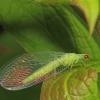It’s National Wildflower Week! The first week in May is a time to celebrate our native wildflowers and the pollinators they support. This post is part of an ongoing series highlighting some of the best plants for pollinators from coast-to-coast. Drawing from our books 100 Plants to Feed the Bees, Gardening for Butterflies , and our Monarch Nectar Plant Guides.
Pearly Everlasting
Anaphalis margaritacea
Pearly everlasting has a poetic common name that refers to its use in dried floral arrangements. Once a popular selection in early American cottage gardens, it has since become rather obscure – which is a shame as it is a host plant for two “ladies”. Caterpillars of American lady (Vanessa virginiensis) and painted lady (Vanessa cardui) butterflies use the plant as a food source in early spring. In a habit that is unusual for butterflies, the caterpillars create a silken web around the plant to feed. This can look discouraging if you are trying to grow this plant, but like in many native plant-insect relationships, the plant generally makes a full recovery and flowers by late summer. The plant has a compact, tidy habit and mixes well in front of taller wildflowers.


Native range: Pearly everlasting typically occurs on dry, sandy or gravelly sites, with populations occurring in New England and eastern Canada, the western Great Lakes, and with broad distribution across the western U.S. and Mexico.
Best for: Providing a larval host for two widely distributed butterflies.



